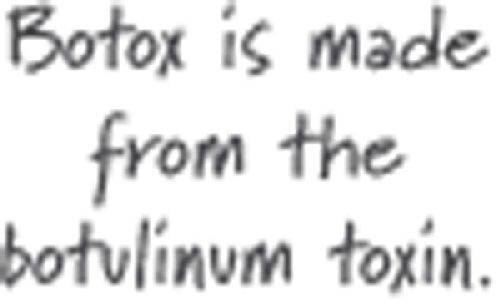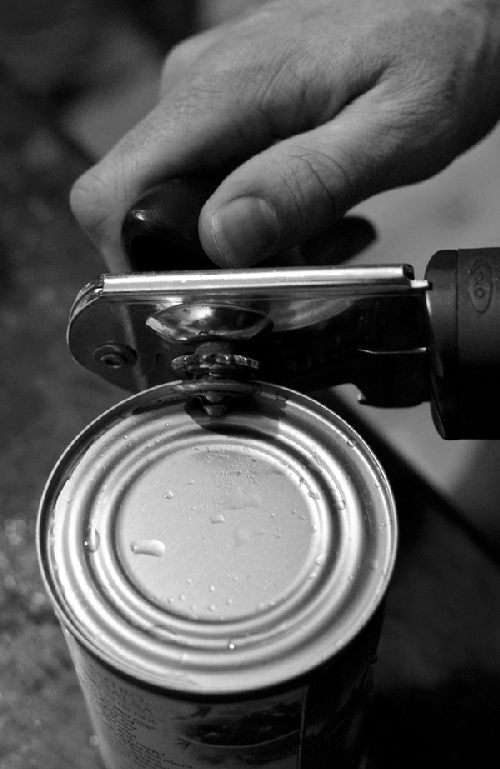The American food supply is one of the most interconnected and interdependent ones in
the world. As I write this, I’m eating my morning bowl of cereal, yogurt, bananas, and
almonds. The muesli cereal is from Switzerland, the yogurt local to New England, the bananas
from Costa Rica, and the almonds from California. The only direction from which food hasn’t
come 3,000 miles is north, and that’s probably only because not much grows at the North
Pole!As our food system has become more interconnected, the number of people that can be
affected by a mistake in handling food has also increased. Today, a single bad batch of
water sprayed onto a field of spinach can sicken hundreds of American consumers because that
crop can be transported thousands of miles and make its way into so many dishes before the
contamination is noticed.
Handling food carefully—taking note of what has been washed in the case of produce and
cooked in the case of meats, and being careful to avoid cross-contamination—is among the
easier ways of keeping yourself healthy.
Bacteria related to common foodborne illnesses begin to multiply above 40°F / 4.4°C. The
standard food safety rule provided by the FDA for mitigating foodborne illnesses from
bacteria states that food should not be held between the temperatures of 40°F /
4.4°C and 140°F / 60°C for more than two hours. Below 40°F / 4.4°C, the
bacteria remain viable but won’t have a chance to multiply to a sufficient quantity to
bother us. Above 140°F / 60°C, the bacteria won’t be able to survive long. (Bacterial
spores, however, can.)
This is called the “danger zone rule,” and as you’d probably imagine, a vast
simplification of what’s really going on in the bacterial world. Still, as an easy safety
rule there’s really no reason to violate it, because there are few dishes that I can think
of that actually need to violate it to be made.
Note:
For those recipes that say to marinate meat at room temperature: don’t! Let it
marinate in the fridge.
Keep in mind that it’s cumulative time here that matters. Say you buy a chicken at the
store, and that it was kept chilled the entire time before you picked it up. Between the
time you put it in the cart and when you stick it in your fridge, it’ll be in a warmer
environment, and any time it spends above the temperature at which bacteria begin to
multiply will increase the bacterial count in the meat.
While cooking food kills off most of the bacteria, a
minor (yet safe) number can survive even post-cooking. Given the right temperature range,
they can reproduce back up into unsafe quantities. When cooking, stick any leftovers in the
fridge right away, as opposed to letting them sit around until post-meal cleanup. The
bacterial level is all about exposure—the amount of time and rate of multiplication at a
given temperature.
Note:
This is why you should defrost large pieces of meat in the fridge overnight. Letting
it thaw, even under cold running water, can take too long to be safe—unless your cold
water happens to be below 40°F / 4.4°C!
One detail this rule glosses over is that some bacteria can reproduce at lower
temperatures. Luckily, most bacteria related to foodborne illness don’t multiply very
quickly at near-freezing temperatures, but other types of bacteria do. Spoilage-related
bacteria, for example, are happy breeding down to freezing temperatures. These are the ones
that cause milk to go bad even below 40°F / 4.4°C and break down the flesh in things like
raw chicken, causing uncooked meats to go bad after a few days. The danger zone rule
addresses only the common pathological bacteria, which don’t reproduce very quickly at the
temperature of your fridge.
Another area that the danger zone rule glosses over is the different rates of
reproduction at different temperatures. Salmonella, for example, is happiest breeding around
100°F / 37.8°C. It’s not like the bacteria go from zero multiplication at 40°F / 4.4°C to
full-on party mode at 41°F / 5°C; it’s a gradual ramp up to an ideal breeding temperature.
The two-hour window is given for the worst-case scenario: that the food is being held at the
ideal breeding temperature for the most aggressive of the common bacteria,
Bacillus cereus.
Since food safety codes are currently adopted on a state-by-state level, some states
still use a danger zone rule of “40 to 140 for four hours,” on the basis that B.
cereus accounts for only a minor amount of foodborne illness and that a
four-hour exposure isn’t likely to produce much risk. If you’re getting the impression that
food safety is a probability game, you’re right. The rules reduce the odds to an acceptable
level. Still, that lunch you took to work and forgot to toss in the fridge is probably safe,
given that the total amount of bacterial multiplication is likely to be well below the level
necessary to trigger any sort of foodborne illness.
The danger zone rule suggests that bacteria multiply right up until 140°F
/ 60°C, whereas the real multiplication rates of foodborne illness-related bacteria
follow a curve with an ideal breeding range in the middle. Of the foodborne pathogens
listed in the FDA’s “Bad Bug Book,” Bacillus cereus has the
highest survival temperature, at 131°F / 55°C.

“But wait,” you might be saying.
“What about all that food in the pantry? Why doesn’t it go ‘bad’?” There are other factors
that bacteria need in order to multiply. The acronym FAT TOM is commonly used to describe
the six factors necessary for multiplication:
F = Food
Bacteria need proteins and carbohydrates to multiply. No food, no
multiplication.
A = Acidity
Bacteria can only survive in certain pH ranges. Too acidic or basic, and the
proteins in the bacteria denature.
T = Temperature
Too cold, and the bacteria effectively sleep. Too hot, and they die.
T = Time
Bacteria have to have enough time to multiply to a sufficient quantity to
overwhelm our bodies.
O = Oxygen
As with pH levels, bacteria will reproduce only if sufficient oxygen is present,
or, for anaerobic bacteria (e.g., Clostridium botulinum), if no
oxygen is present. Keep in mind that vacuum-packed bags are not necessarily devoid of
oxygen.
M = Moisture
Bacteria need water to reproduce. Food scientists use a scale called
water activity, which is a measure of the freely available
water in a material (from 0 to 1). Bacteria need a water activity value of 0.85 or
greater to multiply.
The reason so many pantry goods are “shelf stable” is either low moisture content
(crackers, dry goods like beans and grains, oils, even jams and jellies in which the sugar
is hygroscopic and “holds on to” the water) or acidity (pickled items, vinegars). Given
these six variables, you can see why some foods don’t need refrigeration. When in doubt,
though, stick it in the fridge, which you should keep on the chilly side (34–36°F /
1–2°C).
Note:
Keep basic physics in mind. Placing a large pot of hot soup into the fridge will warm
up all the contents of the fridge until the evaporator has a chance to transfer the heat
back out. Refrigerators are made to keep things cool, not to chill things, so when you’re
storing a large quantity of hot food, place it in an ice bath first to chill it and then
transfer it to the fridge once it’s cooled down.
There’s
one variable that deserves special mention, because of the potentially fatal consequences,
and that’s the oxygen level needed for bacterial growth. Specifically, anaerobic
environments—ones without oxygen—are necessary for some types of
bacteria to multiply. Oil creates an anaerobic environment, but by itself doesn’t provide
any moisture for bacteria to grow. But with the addition of something like a raw clove of
garlic, an anaerobic environment is created, and the garlic provides the food and moisture
necessary for anaerobic bacteria to thrive when given sufficient time at the right
temperatures.
Note:
Oil, even though a liquid, is technically dry because there is no water
present.
A garlic clove stored in oil can become the perfect breeding ground for botulism, the
illness caused by Clostridium botulinum. And since C.
botulinum doesn’t produce any noticeable odor, there’s little to tip you off
that the food is teeming with bacteria and their toxins. The toxins generated by
C. botulinum are much more heat stable than the bacteria themselves
and might remain active through the cooking process. And now to scare you senseless, the
botulinum toxin is the most acutely toxic substance known: a dose as small as ~250
nanograms—1/120,000th the weight of a grain of rice—will do you in.

If you’re going to make something like duck confit or homemade jam the traditional
way—cooking it and then sealing it for storage at room temperature—make darn sure you get
the food hot enough to sterilize it and that you avoid recontaminating it after it’s cooked
and before it’s sealed. To be safe, stick it in the fridge and treat it as perishable. Note
that sterilization means completely eradicating any bacteria, as opposed to pasteurization,
which reduces bacteria to “safe” levels for near-term consumption. Sterilized milk can be
left at room temperature indefinitely; pasteurized milk cannot.
There’s one last aspect I should mention in this brief primer on food safety, and that’s
the risk/consequences equation. While following food safety rules reduces the risk of
illness, it doesn’t completely eliminate risk. For most of us, the consequence of
contracting most foodborne illnesses is gastrointestinal
distress—diarrhea, vomiting, muscle spasms, and the like. However, for those who
are in an at-risk group—anyone for whom having foodborne illness can
lead to further complications—the consequences of a bout of foodborne illness can be much,
much greater, so the acceptable risks are accordingly much lower. If you are cooking for
someone who is elderly, extremely young, pregnant, or immunocompromised, be extra vigilant
with regard to food safety issues and skip dishes that have higher risks (e.g., raw egg in
Caesar salads, unpasteurized cheeses, suspect meats that might be past their expiration
dates).
While bacteria are the most common and easiest-to-manage cause of foodborne illnesses,
they’re not alone: viruses, molds, toxins, and contaminants are also of concern. Toxins and
contaminants are primarily issues for producers of foods, so as a consumer you’re (mostly)
off the hook for those. (If you grow your own veggies, test your soil for
contaminants.)

Besides proper cooking, the best way to combat bacteria, mold, and viruses is good
washing and avoiding cross-contamination:
Wash your hands! And don’t double-dip with the same spoon when tasting a
dish.
Nuke your sponges (rinse them and give them two minutes on high) or run them through
the dishwasher weekly. Better yet, use towels and allow them to dry completely between
uses.
When working with raw meats, be careful not to use the same towel for wiping your
hands that you then use to wipe with post-cooking.
Wash can lids before opening them. Wash the can opener, too. The blade picks up food
while cutting through the lid.